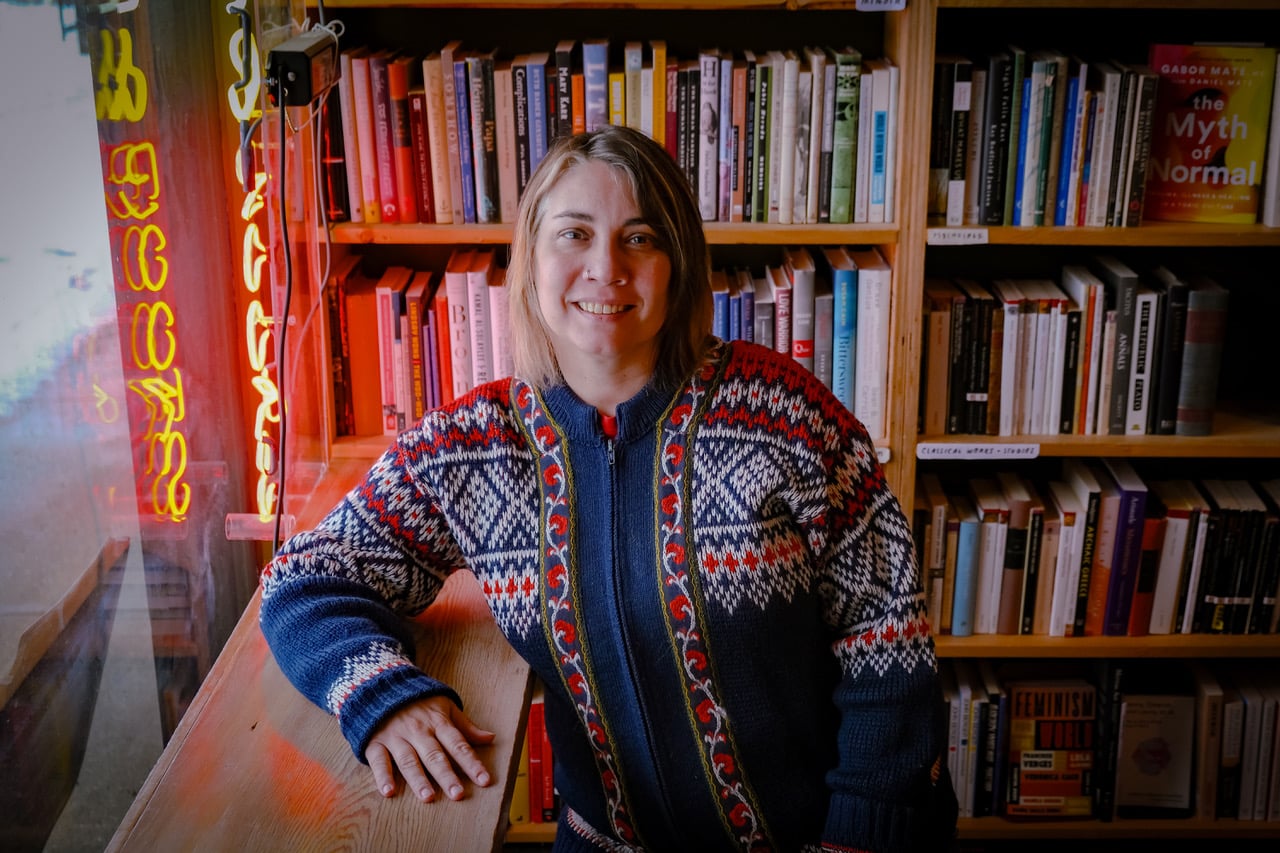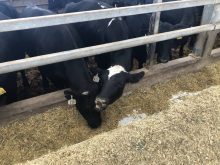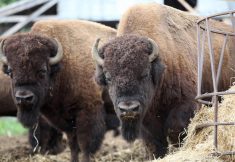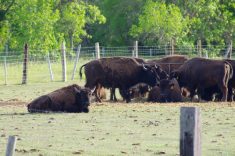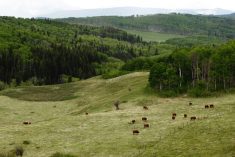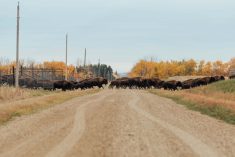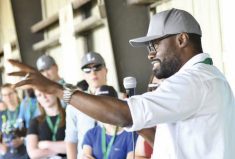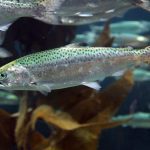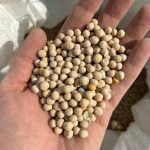A herd of Alberta bison has headed off to college — and they’re a big hit with their two-footed schoolmates.
“Bison are definitely cool,” said Walker Balan, who is in the agriculture technology degree program at Lakeland College.
But Balan and other students who will be working with the herd — which arrived at a new college-owned property in January — are quick to point out that bison are a lot different than cattle.
Read Also
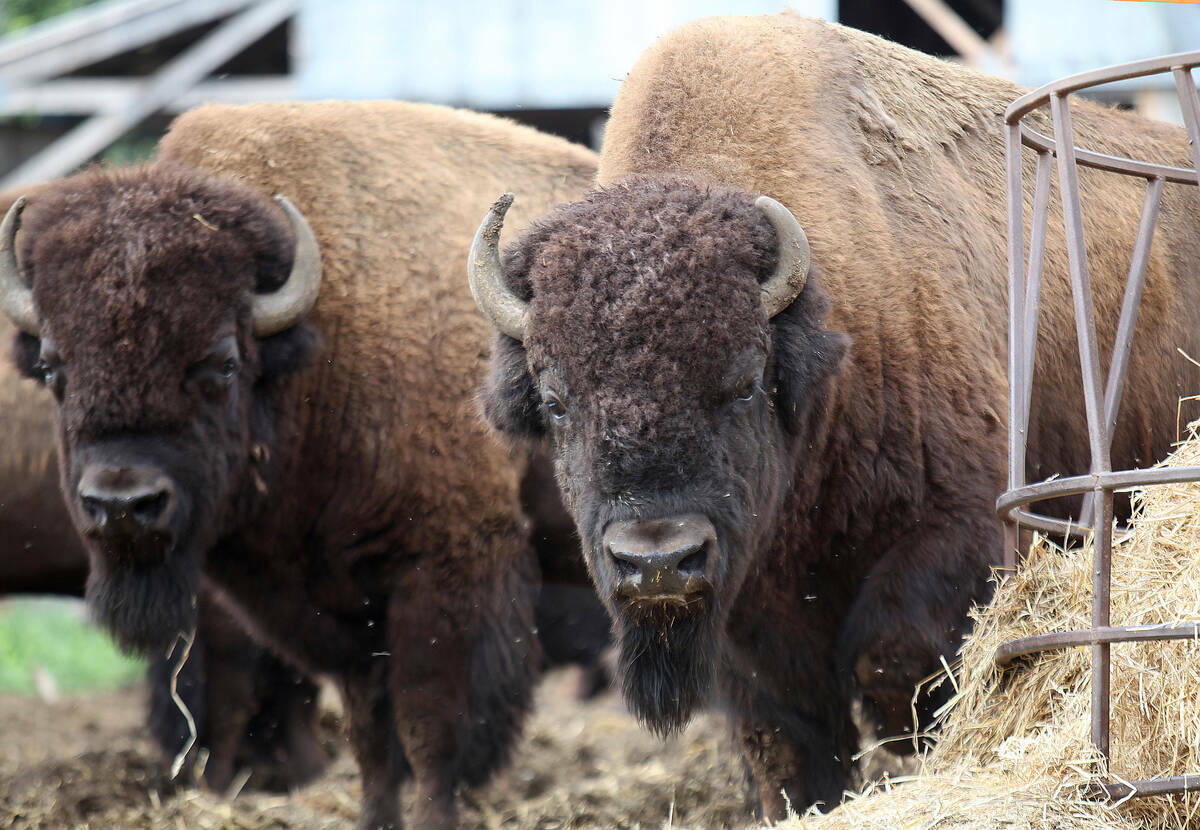
Bison prices remain high, but supply shrinks
Bison numbers are down amid increasing demand and record high market prices.
“I just loved working with the animals — I thought they were a lot of fun and really interesting,” said Bailey Ferguson, who has worked with bison (as well as cattle) before and is now the general manager of the bison division of the college’s student-managed farm.
The new bison ranch, located south of Vermilion, consists of eight contiguous quarters (complete with handling facilities and fencing) that the college purchased for $7.8 million. It all came about because of a donation of $4 million given two years ago by Rita and Armin Mueller, bison producers in the Lacombe area.
“The whole idea is to give the students a commercial-scale bison operation for them to manage,” said Geoff Brown, the college’s dean of agricultural sciences.
The bison program has a bit of a different focus than the crop, dairy, beef and equine operations of the student-managed farm.
“The bison industry has taken a bit of a hit,” said Brown, noting it was strongly affected by restaurant shutdowns during the pandemic as well as a reduction in packer capacity.
“It’s in a bit of a downturn right now, but the history of the bison sector is that it goes through these low spots.”

That side of the industry provides learning opportunities, too.
“It allows for another species for students to learn on but probably more importantly, it’s the business and marketing competencies that we are really looking at now,” he said.
Ferguson and the other four students started preg checking after the herd arrived in January and once that’s complete, the open cows will be culled. And that means the students have also been trying to find buyers.
“We’ve got this production system (and) we’ve got these animals to market,” said Brown. “We’ll let the students make the business decisions so we can generate revenue on that herd.”
And the production side has its own quirks.
“They are a bit different than cattle when handling them,” said Ferguson, a second-year student. “You want it to be low stress and try to do it as quietly as possible. You don’t handle them as much as you would beef cattle.
“You got to watch yourself a little bit more if you’re up close and personal with them. But overall, they’re usually pretty calm.”
Ferguson and her four fellow students are working to establish a good foundation for future years.
“We had two people on our team who had never worked with bison before, but they were interested in it,” she said. “And now they’re out there, learning the chutes and really expanding their knowledge.
“Through the student-managed farm, even if you have no experience, it’s a great way to get into the industry.”
The bison have also offered new and different opportunities for students in the animal technology program.

Balan and his friend and classmate Wylee Squair jumped at the opportunity to do their practicum on bison.
“Me and Wylee come from beef backgrounds, no bison at all,” said Balan. “Compared to beef cattle, they’re very high-stress. They respond negatively to human interaction. If you have to handle them a lot, they get very stressed and that can lead to sickness, weight loss or injury.”
So their research project is focused on using technology to manage the bison in non-invasive ways without physically handling them.
And it turns out drones are a great match for very large animals that have never been domesticated.
“Checking with drones allows people to create kind of a list and an inventory of which cows have calves and what not,” he said. “This helps culling practices. We can do health checks with the drone and see if everything’s okay out there. We can monitor behaviours.”
That includes taking videos of cows nursing their calves.
“We showed this to some bison producers, and they’ve never seen that before,” said Balan.
The duo is also working on a weigh scale that bison will walk over to get weighed, so they don’t have to be run through a chute.
“I think the walk-over weigh scale could be implemented in a traditional beef feedlot,” said Squair. “The impact of handling isn’t that great. But it doesn’t matter what kind of animals or livestock, the less times you have to handle them, the better your production is going to be.”
The work the students are doing with bison is exciting, said Brown.
“The real opportunity is for students to look at an industry that needs a lot of intellectual capacity in terms of the challenges it’s facing and look at technology or marketing techniques,” he said.
“It’s a good pathway to get involved with the (bison) industry. The industry has been receptive to this and has really welcomed our students.”

